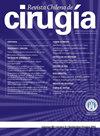Mis primeros 100 colgajos libres
Q4 Medicine
引用次数: 0
Abstract
Introduction: Microsurgical techniques have been consolidated as a safe and reproducible reconstructive strategy with high success rates. They allow to successfully solve complex coverage defects. Its development has been driven by technological improvements, technical standardization and perioperative management. The development and implementation of microsurgery is a complex process, requiring a progressive work by the health team. Objective: Show experience accumulated by the main author in reconstructive surgery during his first 100 free flap and the technical changes due to the modernization. Material and Methods: Retrospective series of 100 free flaps performed by the lead author during the years 2010 to 2015. All patients submitted to reconstructive microsurgery with free flaps were included and no exclusion criteria were established. Clinical and surgical history were reviewed. Descriptive statistics were used to present the results. Results: 100 free flaps, 62% of male patients, mean age 58 ± 15 years. The most used fins were fasciocutaneous (77%), in particular the anterolateral flap of the thigh (47%). Head and neck defects (47%) were the most frequent defects. There were 10 vascular complications (6 arterial and 4 venous), with a failure rate of 7%. Discussion: Teamwork, the use of horse flaps and new technologies are the cornerstone of the microsurgery experience presented. This corresponds to the continuation of the line of work sustained over time.我的前100个自由皮瓣
显微外科技术已被巩固为一种安全、可复制、成功率高的重建策略。它们允许成功地解决复杂的覆盖缺陷。技术进步、技术标准化和围手术期管理推动了其发展。显微外科的发展和实施是一个复杂的过程,需要卫生团队的逐步工作。目的:介绍作者在前100例游离皮瓣重建手术中积累的经验和现代化带来的技术变化。材料和方法:由第一作者于2010年至2015年进行的100例游离皮瓣回顾性系列。所有接受游离皮瓣重建显微手术的患者均被纳入,未建立排除标准。回顾临床及手术史。使用描述性统计来呈现结果。结果:100例游离皮瓣,男性占62%,平均年龄58±15岁。使用最多的鳍是筋膜皮肤皮瓣(77%),尤其是大腿前外侧皮瓣(47%)。头颈部缺陷(47%)是最常见的缺陷。血管并发症10例(动脉6例,静脉4例),失败率7%。讨论:团队合作,马皮瓣的使用和新技术是显微外科经验的基石。这对应于随着时间的推移而持续的工作。
本文章由计算机程序翻译,如有差异,请以英文原文为准。
求助全文
约1分钟内获得全文
求助全文
来源期刊

Revista Chilena De Cirugia
Medicine-Surgery
CiteScore
0.20
自引率
0.00%
发文量
0
审稿时长
6-12 weeks
期刊介绍:
La Revista Chilena de Cirugía es un órgano de difusión del conocimiento y actividad quirúrgica. Su población objetivo son cirujanos, especialistas de otras áreas médicas, médicos generales y alumnos del área de la salud.
Sirve a cirujanos y otros especialistas, para publicar artículos originales e inéditos sobre temas médicos, en particular artículos de investigación básica y clínica, artículos de revisión, entre otros.
Buscan difundir y actualizar el conocimiento médico general y quirúrgico en particular. Se publica en forma bimestral.
La Revista Chilena de Cirugía está afiliada y patrocinada por la Sociedad de Cirujanos de Chilese desde el año 1952.
 求助内容:
求助内容: 应助结果提醒方式:
应助结果提醒方式:


